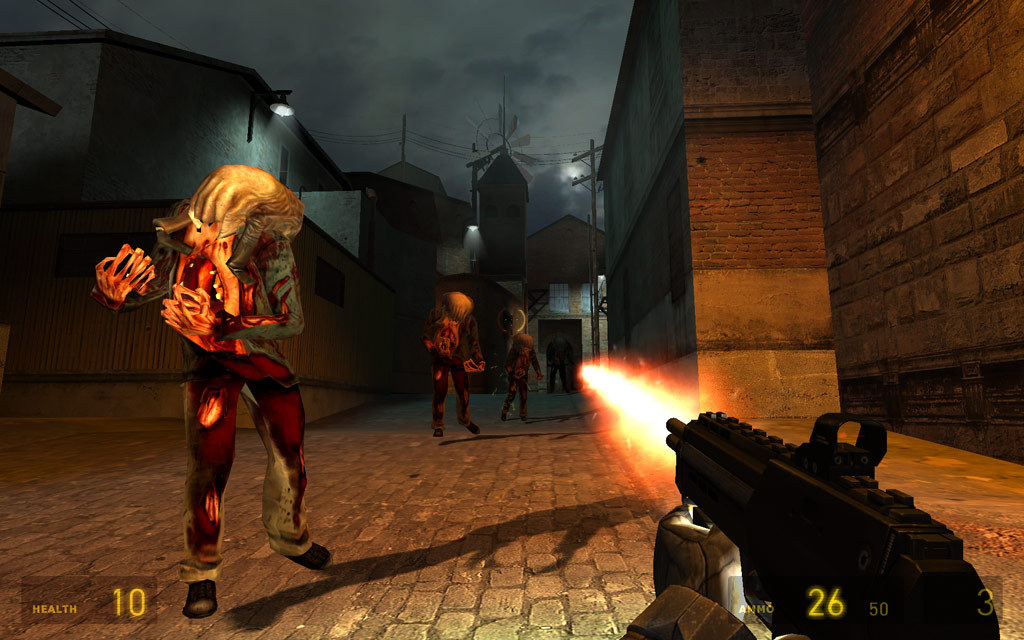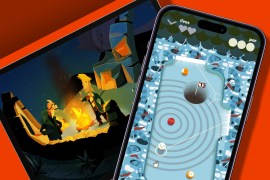20 years of Half-Life 2: Raising the crowbar to one of the greatest sequels ever
Half-Life 2 is 20 years old this November and still features prominently in top PC game lists. But how did Valve’s sci-fi shooter and videogaming’s most silent protagonist capture our hearts yet again? We dust off our trusty crowbar and dive back into City 17 to explore why.

“Wake up, Mr Freeman. Wake up and smell the ashes.” It’s a chilling opener to one of the finest sequels of all time, where so much was riding on whether developer Valve could pull off a game as good as the original and groundbreaking Half-Life.
Like a music band’s difficult second album, a game’s second instalment serves as a statement of intent towards the franchise. Do you stay the course and add incremental upgrades, risking mediocrity and deja vu, or do you up-end the table and risk alienating your player base?
Valve’s president, Gabe Newell, gave his team a daunting task: redefine the FPS genre. The game was created using the company’s all-new Source engine, allowing for advanced physics, AI and graphics. Though the game was beset with multiple delays, the team effectively had no deadline, with Valve wanting to get it “right” rather than “done,” rather refreshing in today’s gaming climate.
In creating Half-Life 2, Valve narratively tangents off into wildly unfamiliar territory. Where its prequel was mostly set in the impressive Black Mesa research facility amid a dimension-tearing disaster, HL2 is set some 20 years later in a metropolis called City 17. And the aliens have already won.
The city delivers an unprecedented level of immersion and atmosphere. Based on art director Viktor Antonov’s home city of Sofia, Bulgaria, inspiration was also taken from similar post-Soviet era architecture.
The metropolis is full of dilapidated high-rise buildings that feel tall yet squashed and on the verge of crumbling into bits. The Combine alien presence injects starkly sleek and futuristic buildings that pierce the skyline, seemingly assimilating themselves forcefully onto the land. On massive screens overhead, the face of Dr Breen looks down upon you, Big Brother style.
As you navigate the various residential towers in the game’s first act, you feel a palpable sense of dread and defeat. Denizens of City 17 go about their lives, barely surviving in a state of oppressive grief, caged within steel fences, held up at checkpoints and subject to the harsh treatment from the Combine. However, there’s hope — there’s a resistance movement in the city, and with the return of Gordon Freeman, the hero of Black Mesa, it’s time to fight back.
Sadly for you, there’s an ungodly horde of enemies to fight. Naturally, zombies are back, and everyone’s favourite jumpscare enemy, the headcrab, gets an upgrade in the form of a poisoned variant, which instantly depletes your health to 1 hitpoint. Joining them are Combine forces — aggressive soldiers whose suits bellow out a disturbing flatline sound effect when downed. Oh, and there’s fast zombies, dark, skeletal monstrosities that can climb and perform jumping lunges with blood-curdling screams, guaranteed to haunt your dreams. Deadlier assailants come in the form of Combine gunships and Striders, massive walking tripods bearing down at you with machine gun fire.
Thankfully, you have more than your crowbar and stern looks to defend yourself. From the humble pistol to the laser-guided rocket launcher, each weapon sounds great, with enough thump to make you feel like a brainy John Wick. The Colt Python sounds like a cracking bullwhip, while the SPAS-12 shotty’s meaty racking sound gives a warming sense of comfort, and the overwatch pulse rifle’s concussive thuds are arguably the most satisfying in all of gaming weaponry.
Physics puzzles make a welcome return for you to test your noggin. Despite being an action-oriented FPS, many sections have you navigating obstacles such as electrified walkways or water sections. The game’s Havok engine lets players experiment with physics in several ways. Got a sunken platform that needs raising? Try moving some inflatable barrels underneath. See a walkway that’s out of reach? Make a seesaw and counterweight by placing weighty items on a plank of wood.
Helping you bend physics to your will is the gravity gun, which is only second to the majestic lightsaber as sci-fi’s best weapon of all time. Letting you manipulate objects by pulling or punting them, you can turn any inanimate object into a deadly weapon. And let’s not forget the moment when your grav gun becomes upgraded in the game’s third act, letting you pull enemies and yeet them like ragdolls into their hapless comrades.
The innovations didn’t stop there. Chapters often mixed up the gameplay, ensuring things always felt fresh. Vehicle sections added some much-needed breathing room between bullet-heavy locales and added to the game’s grand sense of scale. Alyx Vance, your faithful companion during some sections, was a competent fighter and was so well-written that she became a series’ fan favourite. The game’s infamous Ravenholm level was like a horror B-movie, with scant ammo and zombies aplenty, forcing you to use the environment and the odd sawblade to see you through.
There’s also exciting news for those eager to return to City 17 and the world of Half-Life. As part of the 20th anniversary celebrations, Valve has recently announced that a Half-Life 2 bundle is available to download completely free of charge on Steam until Monday, 18 November, 10amPT/6pm GMT.
That includes the base game, featuring map improvements, bug fixes, gamepad support and high quality graphics settings, DLC packs Episodes One and Two, the Lost Coast, plus a special documentary and developer commentary.
Despite that wonderful bundle, there’s sadly still no news on Half-Life 3, but we’ve got our fingers and headcrab legs crossed for an update soon.


